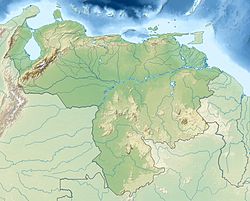| Escalante River | |
|---|---|
| Native name | Rio Escalante (Portuguese) |
| Location | |
| Country | Venezuela |
| Physical characteristics | |
| Mouth | |
• coordinates | 9°14′45″N71°47′07″W / 9.245967°N 71.785386°W |
The Escalante River (Spanish : Rio Escalante) is a river of Venezuela. It drains into Lake Maracaibo.
The river rises in the Venezuelan Andes. It then flows through the Maracaibo dry forests ecoregion before emptying into Lake Maracaibo. [1]
